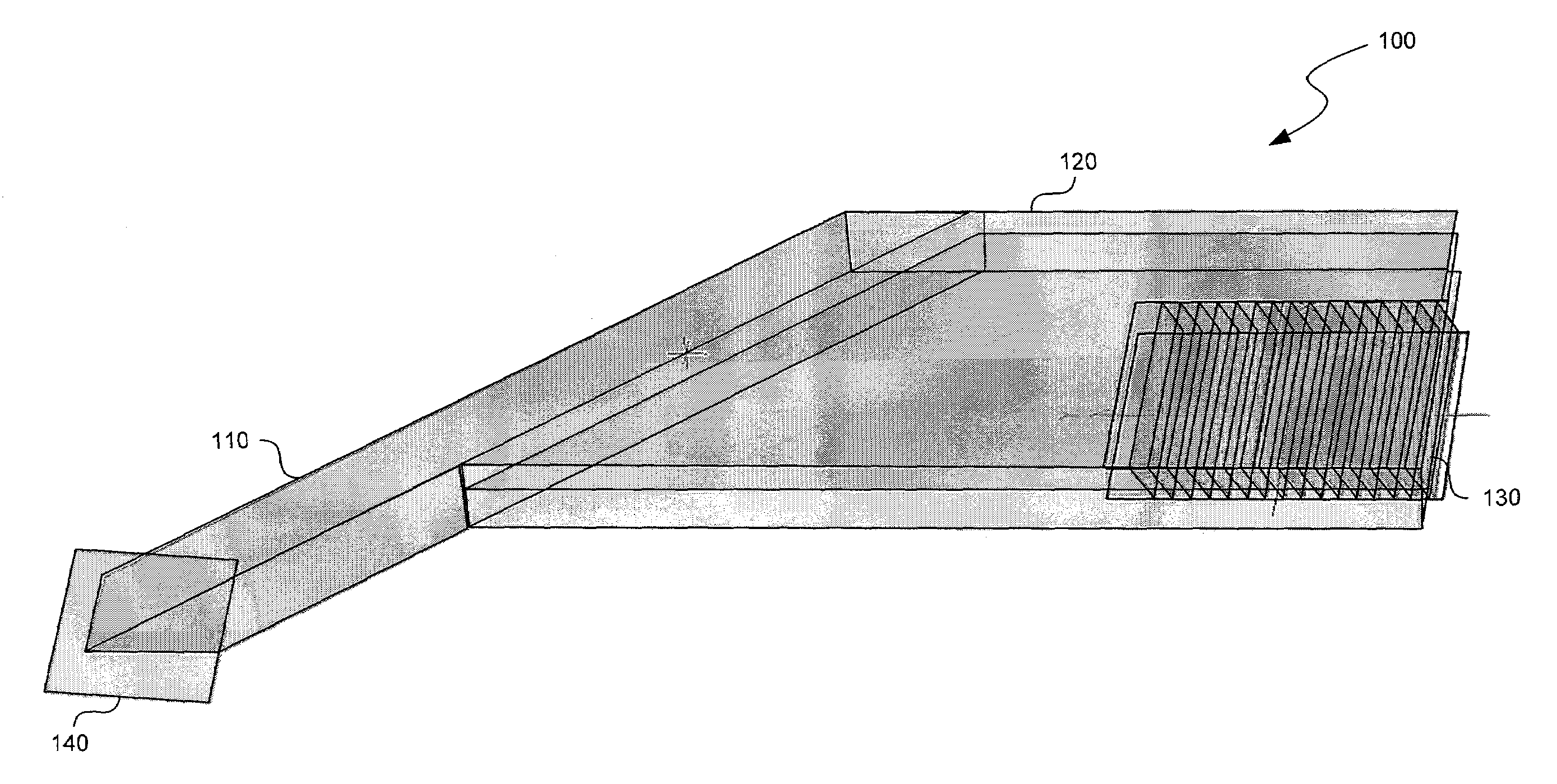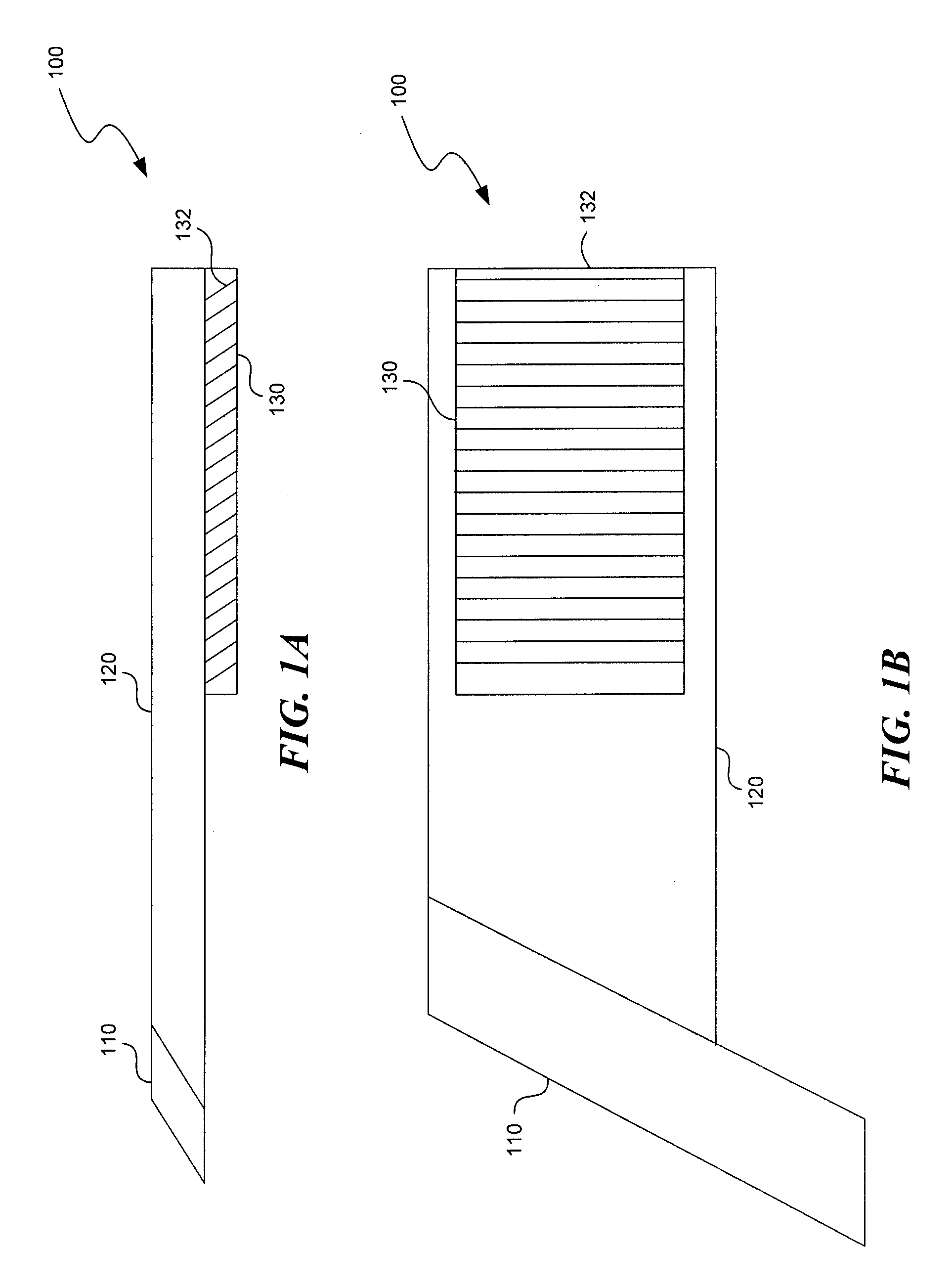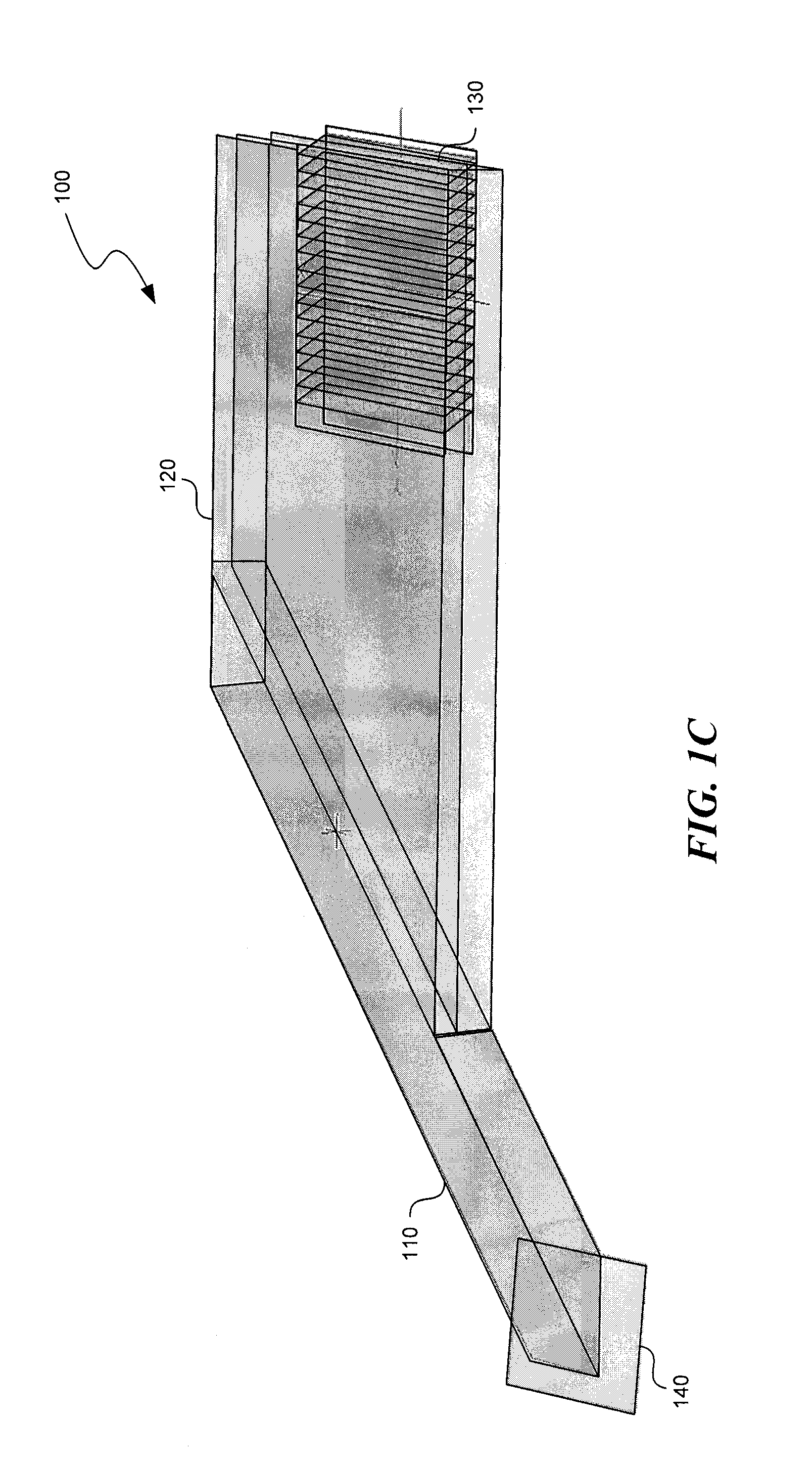Substrate-guided relays for use with scanned beam light sources
a relay and beam light source technology, applied in the direction of mirrors, instruments, polarising elements, etc., can solve the problems of large and heavy display systems relying on these techniques, large size and weight of systems, and image discontinuities
- Summary
- Abstract
- Description
- Claims
- Application Information
AI Technical Summary
Problems solved by technology
Method used
Image
Examples
Embodiment Construction
[0030]Various substrate-guided relays that employ light guiding substrates to relay images from sources to viewers in optical display systems are disclosed. The substrate-guided relays are comprised of an input coupler, an intermediate substrate, and an output coupler. In some embodiments, the output coupler is formed in a separate substrate that is coupled to the intermediate substrate. The output coupler may be placed in front of or behind the intermediate substrate, and may employ two or more partially reflective surfaces to couple light to and / or from the coupler. In some embodiments, the input coupler is coupled to the intermediate substrate in a manner that the optical axis of the input coupler intersects the optical axis of the intermediate substrate at a non-perpendicular angle. In some embodiments, the input coupler is coupled to the intermediate substrate in a manner that the optical axis of the input coupler intersects the optical axis of the intermediate substrate at a p...
PUM
 Login to View More
Login to View More Abstract
Description
Claims
Application Information
 Login to View More
Login to View More - R&D
- Intellectual Property
- Life Sciences
- Materials
- Tech Scout
- Unparalleled Data Quality
- Higher Quality Content
- 60% Fewer Hallucinations
Browse by: Latest US Patents, China's latest patents, Technical Efficacy Thesaurus, Application Domain, Technology Topic, Popular Technical Reports.
© 2025 PatSnap. All rights reserved.Legal|Privacy policy|Modern Slavery Act Transparency Statement|Sitemap|About US| Contact US: help@patsnap.com



